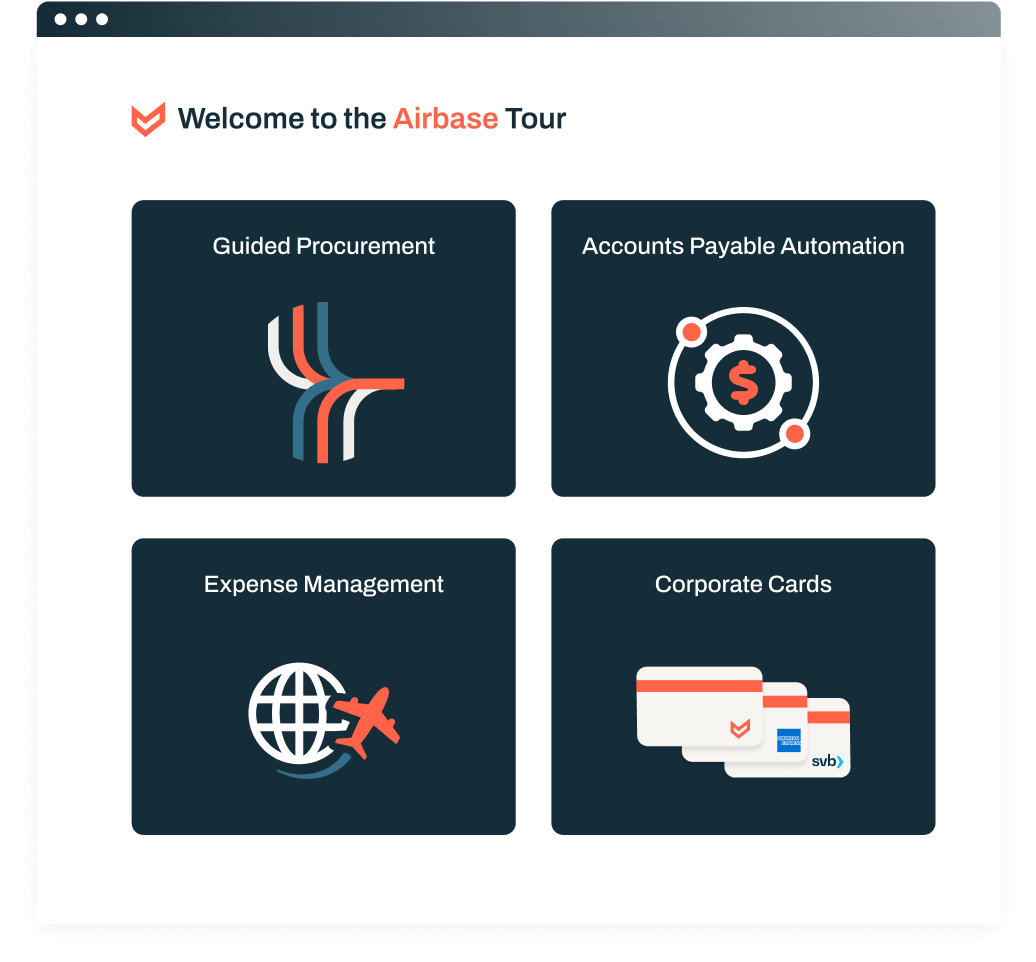Procure-to-pay (P2P) analytics is the use of data and analytics to improve the P2P process.
Supplier information management (SIM) is the process of collecting, storing, and analyzing information about suppliers.
Approval workflows are the cornerstone of any company’s purchasing process.
Visibility and control over financial transactions are essential for accountants and finance teams to maintain accurate records and ensure the compliance.
Indirect spend is the term used for purchases that aren’t included in an organization’s cost of goods sold (COGS).
Invoice automation refers to the use of software to handle invoice workflows.
An IPO, or initial public offering, is when a private company offers its shares to the public for the first time.
Accounts payable (AP) automation is the use of technology to automate the AP process.
Budget controls are a set of procedures and policies that are used to ensure that an organization’s actual spending adheres to its financial plan.
On Time, In Full is a key performance metric within supply chain management because it represents the efficiency and reliability of the delivery process.
A Request for Proposal is a formal document that organizations use to solicit bids for services, products, or solutions from potential suppliers or vendors.
Robotic process automation (RPA) is a technology that allows businesses to automate repetitive, rule-based tasks.
Supplier relationship management (SRM) is a crucial part of procurement that focuses on nurturing and optimizing relationships with suppliers.
Reconciliation is the process of comparing two sets of records to ensure that they agree.
Spend management is the process of planning, budgeting, tracking, and controlling spending.
Virtual cards are a type of credit or debit card that are generated and stored electronically.
Discounted cash flows is a valuation method used to determine the present value of the future cash flows generated by an investment or business opportunity.
Early Payment Discounts are a pivotal strategy in financial management, offering mutual benefits to both suppliers and buyers.
Fraud prevention is a series of proactive measures to detect, deter, and mitigate the risk of fraudulent activities within an organization.
Incoterms are a set of standardized trade terms published by the ICC outlining responsibilities and obligations of buyers and sellers in international trade.
Internal controls are policies, procedures, and systems that safeguard a company’s assets, ensure accurate financial reporting, and uphold compliance with laws and regulations.
Fiduciary responsibility represents a legal and ethical obligation held by an individual or entity to act in the best interest of another party.
E-sourcing is a strategic procurement process that uses digital technology and online platforms to optimize the sourcing of goods, services, and suppliers.
A cash flow statement is one of the three central financial statements, along with the income statement and balance sheet.
Discover what cost reimbursement contracts mean, the mechanism, the entire reimbursement process, and the types of cost reimbursement contracts.
A purchase order number is an identifier businesses use when making a purchase. Both the buyer and seller use these numbers to track orders, ensure accurate billing, and manage financial records.
Understand what a procurement policy means, its key functions and benefits, and best practices for creating one for your organization.
Request for quote (RFQ) is a versatile procurement tool used across various industries. It plays a crucial role in facilitating fair competition and fostering transparent communication between buyers and sellers.
The accounts payable turnover ratio is a vital financial metric that evaluates an organization’s efficiency in managing short-term liabilities and cash flow.
Cash flow management is the process of monitoring, analyzing, and controlling a company’s cash inflows and outflows.
Contract compliance is the process of ensuring that a business is meeting all of its contractual obligations.
Direct spend refers to expenses directly involved in the production of an organization’s products or services.
What is IPO readiness?
IPO readiness refers to a privately owned company’s preparation to offer ownership equity ...
Real-time visibility into financial operations is essential for accountants in today’s fast-paced business environment. By having access to real-time data, accountants can make more informed decisions, identify potential problems early on, and improve their overall efficiency.
Request for X, or RFx, encompasses a family of documents used by organizations to initiate the procurement process and solicit proposals from potential vendors.
Spend analytics is the systematic process of collecting, cleansing, categorizing, and analyzing spending data to gain actionable insights into an organization’s spending habits.
Supply management, often referred to as procurement or supply chain management, is the strategic sourcing, procurement, and optimization of resources necessary for an organization’s operations.
Tail spend refers to the numerous, lower-value, and unmanaged transactions outside of strategic spend.
The intake process is the first step in procurement. During intake, requisitions for goods or services are submitted and assessed.
The workflow or process of negotiating terms and obtaining products, services, or labor from an outside source
Total cost of ownership (TCO) is a framework used to understand the true costs of buying something, plus the cost to operate it over its useful life.
Value engineering, also known as value analysis or value management, is used to optimize the value of products, projects, processes, or services.
Vendor management is a strategic approach that organizations use to optimize relationships with suppliers, vendors, or partners during the procurement lifecycle


